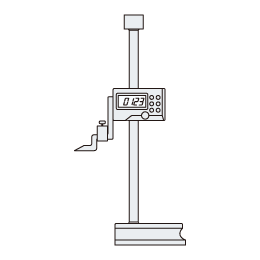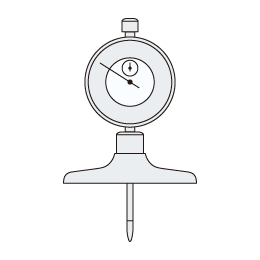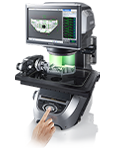Measurement System Types and Characteristics
Vernier Calipers/Height Gauges (Depth Gauges)
Overview
Hand calipers are measuring instruments that can measure a variety of items such as length (outer shape), inner diameter, and level differences. Their use is widespread in manufacturing due to their ease of use and their ability to perform measurements with comparatively high accuracy. Recently, digital hand calipers have become increasingly popular.
The most commonly used hand calipers are M-type hand calipers and BC-type hand calipers, which are used to measure large objects.
Construction and Applications
- Length (outer shape) measurement: Close the large outer jaws on the measurement target, and then read the values from the main scale and the Vernier scale.
- Inner diameter measurement: Insert the small inner jaws inside the measurement target, and widen the jaws until there is no gap between the jaws and the target to perform the measurement.
- Level difference measurement: Insert the depth probe or a step into the hole or level difference to perform measurement.
How to use Vernier calipers
- During measurement, grasp the main scale and move the slider with your thumb to close the large outer jaws around the target. Pushing the slider too forcefully will cause the jaws to be at an angle, which will prevent accurate measurement. Also, when measuring a cylinder, be sure to firmly close the parallel surfaces of the large outer jaws around the target.
- Read the gradations on both the main scale and the Vernier scale on the hand caliper. The Vernier scale divides one gradation of the main scale into 20 gradations. In general, this enables measurements in units as small as 0.05 mm.
- Read the Vernier scale from the left at the position where it overlaps with the gradation of the main scale.
Handling Precautions
- Applying more force to the slider than necessary during measurement may lead to errors caused by the large outer jaws becoming bent.
- With the scales at zero, the normal state is where no light leaks from the large outer jaws when they are closed.
- Exercise particular care when handling the small inner jaws and the depth probe, as these parts may deform easily if handled roughly.
- Periodically confirm whether the measurement accuracy has been maintained. One simple and useful method is to use a gauge block to perform measurements.
- The calibration interval for hand calipers, height gauges, and depth gauges is 6 months to 2 years.
Height Gauges and Depth Gauges
Height gauges and depth gauges can be considered relatives of hand calipers. When combined with a dial gauge, a height gauge can be used to measure height. Depth gauges, meanwhile, are used to measure level differences.


- Measurement System Types and CharacteristicsIndex
- Measurement System Types and CharacteristicsMicrometers



